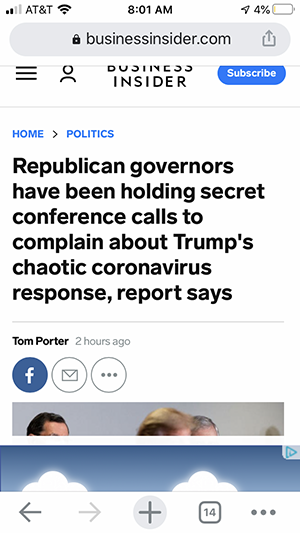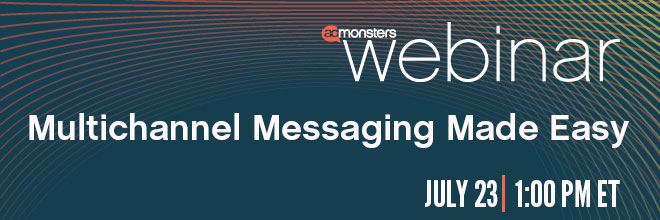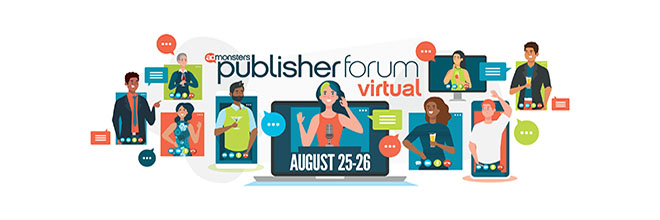 |
|||||||||||||||
|
|||||||||||||||
| Advertisers Fly Non-Stop Programmatic and Save |
 |
| The now-infamous ISBA study has many marketers wondering where that mysterious and unaccounted-for 15% of their ad spend is going—and it looks like end-to-end programmatic platforms have seen an opening. Amazon is the latest to note that inventory from its Amazon Publisher Services SSP doesn’t take a fee when purchased through the company’s proprietary DSP. In addition, notes Advertising Technology Product Marketing Team Lead Zach Schapira, this helps Amazon’s advertising clientele “secure 10% lower clearing prices versus accessing the same publishers through third-party exchanges.” Sure sounds like a tasty deal for buyers. And Amazon isn’t the only end-to-end buying/selling platform doing the same—Verizon and AppNexus (or Xandr or WarnerMedia or we don’t even know anymore) offer the same deal. Intriguingly, Google does not, but does dynamically waive fees with certain amounts of spend or to increase win rates. |
| When spending is under a microscope, cutting costs by escaping fees will look awfully tempting for buyers. Most major SSPs have picked up some kind of DSP in the last year—watch them all push out a similar proposition. We’ve already been curious if the independent SSP or DSP is much longer for the ad-tech world. And we have to note that buyers focusing on end-to-end channels is not necessarily the best for a publisher’s yield efforts. |
| AVOD Opportunities Abound |
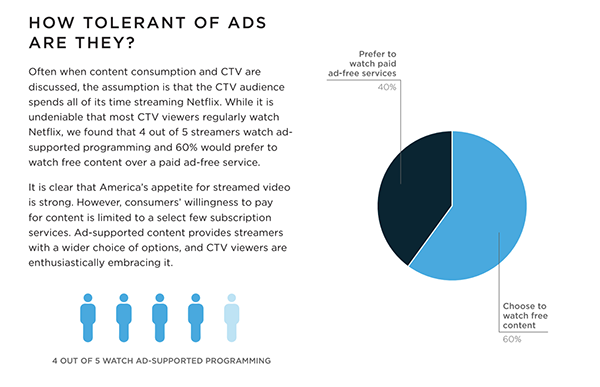
Image sourced from SpotX
|
| Remember back in January when AdMonsters Contributor, John Osborn warned us about the pitfalls of ad clutter in the AVOD space? He specifically asked, “The big question: as sea-levels of ads rise and flood the media ecosystem, will anyone actually view or give their attention to ads?” Ok, so maybe you don’t remember, but it’s our job to do so. Well, it just so turns out, according to SpotX’s recent report, CTV Is For Everyone, 80% of CTV viewers said they watched some form of ad-supported CTV programming, which accounts for about four out of five viewers. Meanwhile, 60% reported they’d more likely choose free CTV ad-supported content over subscription-based. People understand that advertising helps pay for the content they freely consume, and because of this, they’re willing to accept that value exchange from content providers. This is especially true when the advertising is personalized, as 57% of people in the study said they see ads for products they have an interest in. But that doesn’t stop them from being concerned about how their data is being used for advertising purposes—at least 71% said they were concerned. |
| Thanks to the pandemic, there’s been a significant surge in CTV viewership and subscriptions. What SpotX study reveals is that Netflix isn’t the only game in town for consumers. For advertisers, that means there are opportunities aplenty. This is especially true given that the CTV audience has grown beyond the early adopter crowd (you know, the young, tech-savvy, digital natives?) extending into all age demographics, ethnicities, socioeconomic groups, geographic markets, and household types. Likewise, the ad tech powering the AVOD space has matured as well making advertising more relevant to users. But it’s important that media companies and advertisers be mindful of frequency capping and focus on privacy first. One of the biggest issues people reported with ad-supported CTV was being shown the same ad too many times, while nearly 30% said they found it creepy when ads follow them across screens. As Osborn called out in that article we told you guys about earlier: “The idea of putting the media consumer first is one that Hulu has pursued as it explores several different models, including watching a long-form commercial in exchange for an uninterrupted program with no ads or offering ad-free episodes for binge-watchers. After all, it is the consumer, with remote control or keyboard in hand, who decides and votes on what consumer experience is acceptable and what isn’t. In advertising, their actual attention is the only thing that matters.” |
| IAB TCF 2.0: Considerations and Upgrade Checklist | ||
| You likely know by now that publishers leveraging the IAB Europe Transparency and Consent Framework (TCF) need to prepare to switch to support for TCF 2.0 before August 15 when support for version 1.1 will end. With the list of features, purposes, stacks, new structure for the TC String, and more, there are significant changes from previous versions. And after an initial transition phase in 2.0 adoption, older versions will be deprecated. If you’re a small publisher or media company with just one or a few domains, building a CMP should be a breeze. There are free tools to help you get up and running quickly. However, if you need to target a broader audience or want to think about keeping track of consent records and leverage A/B testing functionality, upgrading to a full Consent Management Platform is the way to go. If you fall in the medium bucket, you likely manage multiple domains, need to manage stacks, and integrate with Google ads. Until Google is a registered vendor of TCF 2.0, Google must be listed separately from the IAB TCF 2.0 approved vendors. Make sure you use a software solution that can configure the CMP so that you are integrated with Google and TCF 2.0 compliant. If you’re a large enterprise, you may be looking to manage multiple vendors, integrate with various platforms, and build a CMP for your mobile application. Make sure you select a solution that lets you search and filter vendor list sourced directly from IAB without leaving the product, manage purposes in bulk and by individual vendor and blacklist non-compliant vendors. For mobile apps, you’ll need to create a CMP as you would for web properties, export the native SDK and import it into your application. |
||
| IAB TCF 2.0 gives publishers more power regarding how ad tech vendors and advertisers can utilize the data collected on websites or apps. Plus, it offers the opportunity to establish next-level transparency with your customers. But time is running out. By August 15, all global vendors and CMPs under TCF v1.1 will no longer be supported. IAB TCF 2.0 is a win for publishers—and there are plenty of ways to ensure your transition is seamless. | ||
|
||
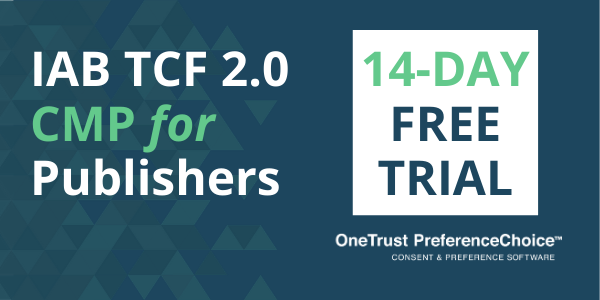 |
| CCPA 2.0 Is Gunning For Ad Tech |
| Congratulations, you beefed up your CCPA compliance and you’re now ready to relax. Enforcement just hit a couple of weeks ago, so you had many months to prepare—COVID-19 notwithstanding. We know, the journey was riddled with complexities. After GDPR, you thought CCPA was going to be an even bigger problem for the advertising ecosystem, but that was because you hadn’t met CCPA 2.0 (aka CPRA) yet. California’s guns are blazing to pass the even more stringent CPRA by the end of the year, when the state’s voters have their say on the ballot on November 3. With CCPA there was all of this confusion around what constitutes a “sale,” which some actually saw as a loophole. CPRA, on the other hand, will clear all of that up. It adds a new definition of data “sharing” with an opt-out requirement that resembles the CCPA “sale” provision. “Sharing,” specifically speaks to the provision or transfer of data for “cross-context behavioral advertising,” This will hold true whether there’s actually any money involved. Pubs will have to implement an additional opt-out button for all third-party cookie collection. The updated privacy reg will bring a host of other changes to ad tech. One measure will limit ad tech vendors from adding any personal data collected to their own data for the purpose of serving targeted advertising. And like with GDPR, they will be responsible for their own compliance. It’s starting to sound like the regs are single-minded, doesn’t it? There is at least one plus. Consumers will have the opportunity to make requests to update their personal info and potentially make it more precise, which could actually aid advertisers in their targeting efforts. |
| Being compliant with CCPA won’t necessarily mean that you’re going to be ready for CPRA, or the countless other state privacy regs that pop up. Besides California, Nevada and Maine, 24 other states are stepping up to protect consumers. It’s important that pubs and advertisers think beyond GDPR and CCPA. As Marc Sabatini, CRO of Aqfer recently wrote on StreetFight, “blanket policies and compliance band-aids could result in brands cutting away 20%-40% of the data they would have previously collected.” In other words, don’t cut off your nose to spite your face. Prepare an agile approach to data governance that will provide a broader view into data collection and how each state’s law applies. |
 |
||||
 |
||||
|
||||
 |
||||
|




